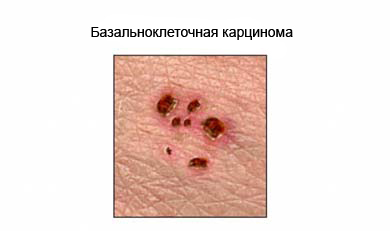Mikrograficheskaya Mohs surgery
Mohs micrographic surgery Description
Mohs surgery is used to remove skin cancer, which occurs on the face and other sensitive areas. The doctor removes the cancer layer by layer, examining tissue under microscope, until only healthy tissue.

Reasons for Mohs micrographic surgery
The operation is most often used to treat basal and squamous cell carcinoma, and other, a rare species of skin cancer, which:
- It appears on the face (including centuries, lips), scalp, ears, neck, shins, hands, fingers, feet and genitals;
- Previously, he was cured, but again relapsed;
- There was some scar tissue;
- It has a large area;
- It has badly defined edges;
- Rapidly growing.
This operation is an effective and precise way to treat basal and squamous cell carcinoma of the skin cells. The procedure provides a good opportunity to completely remove the cancer, while sparing healthy tissue.
Possible complications Mohs micrographic surgery
Complications are rare, but no procedure does not guarantee the absence of risk. If you plan to Mohs micrographic surgery, you need to know about possible complications, which may include:
- Bleeding;
- Scarring;
- The reaction to a local anesthetic;
- Infection;
- Damage to nerves (temporary or permanent numbness or weakness);
- Itching or “shooting” pain.
Factors, that may increase the risk of complications:
- Smoking;
- Receiving blood thinners.
We need to discuss these risks with your doctor before the procedure.
How is Mohs micrographic surgery?
Preparation for the procedure
During preparation for surgery:
- Tell the doctor if allergies or health problems;
- Probably, You can continue to take prescribed medication. Tell your doctor, if you are taking medicines, blood thinners;
- We need to organize a trip home from the hospital and home care after surgery;
- On the day of surgery you can eat everyday food.
Anesthesia
Local anesthesia, anaesthetises that area of operation. During surgery, the patient is conscious.
Procedure Mohs micrographic surgery
Field operations will be treated with an antiseptic, then a local anesthetic is administered. Using a small scalpel doctor will remove the top, the visible part of the affected tissue. Then the doctor will remove another, deeper layer. The layers will be divided into sections. Each section is designated a color. This will allow the doctor to know exactly the location of the remote areas of the skin.
Deleted sections will be frozen and examined under a microscope to detect remaining cancer cells. If the cancer is detected in the last layer of the remote, the doctor will continue operation. There will be additional layers of tissue removed, until the entire affected area is cleared of cancer. When a large area of tissue removed the doctor will close the wound sutures, Each transplants, or procedure will be conducted skin grafting. Small, shallow wounds may heal without stitches.
How long will the Mohs micrographic surgery?
Direct operation is fast. You have to wait, while the doctor examines the tissue under a microscope. In some cases, this procedure can last for several hours.
Mikrograficheskaya Mohs surgery – Will it hurt?
You will experience minimal discomfort during the procedure. There may be minor pain during recovery. The doctor will give you pain medicine.
Care after Mohs micrographic surgery
Care in a hospital
After the procedure, you can get pain medication and antibiotics, and go home.
Home Care
When you return home, Follow these steps:, to ensure the normal recovery:
- Keep the area of operation clear, dry and protected. Follow your doctor's instructions for the care of the operating wound;
- Ask the doctor, when it is safe to shower, bathe, or to expose the surgical site to water;
- For pain relief, you can take the light painkillers, such as acetaminophen;
- It is necessary to have regular examinations. The doctor will monitor the condition of the skin;
- Keep in mind, that the surgical site may remain a scar. Over time, the appearance of the skin should improve;
- It is necessary to take steps to prevent skin cancer:
- Use a sunscreen with a sun protection factor (SPF) no less 15;
- Protect your skin from the sun. For Example, wear shirt, wide hat and sunglasses;
- Regularly check your skin for changes.
Contact your doctor after Mohs micrographic surgery
After returning home, you need to see a doctor, If the following symptoms:
- Bleeding or other discharge in operation;
- Increased pain;
- Redness, fever, sensitivity or swelling at the incision site;
- Signs of infection, including fever and chills.
